Up to 50% Clearance Clothing & Footwear + Extra 25% Off REI Outlet.
It’s March! And in most of the country, that means there’s still a solid chance of snow. But don’t let that stop you from getting outside to hike, because snowy winter hikes are seriously the best. So strap on a pair of snowshoes and get to it! We recently tested a couple pairs of TSL Snowshoes and had a blast. Here’s what we thought of the two models we tested: the Symbioz Hyperflex Phoenix and Highlander Adjust snowshoes.
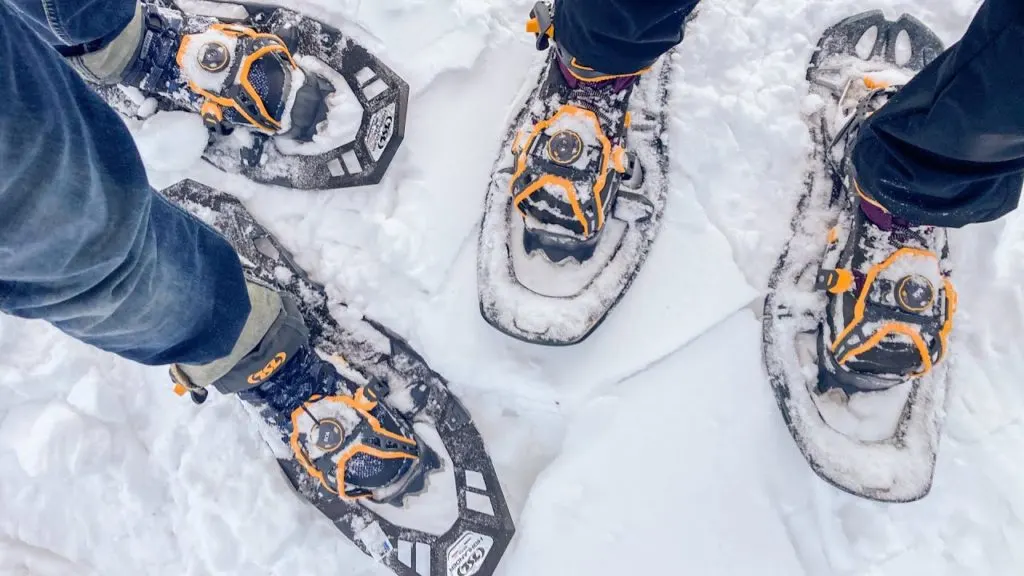
The TSL Snowshoes
We love hiking in the snow. But it can be a pain, especially when every step requires three times the effort ‘cause you’re post-holing all the way down the trail. (That’s when your feet sink down several inches–or feet–into the snow with every step and you have to pull them back out again. Over. and Over.
It’s not a lot of fun.
But that’s where snowshoes come in. They strap to the bottom of your feet and not only keep you on top–or at least mostly on top–of the snow for easier walking in winter, but offer traction on slippery, semi-frozen surfaces, too.
And the TSL Symbioz Hyperflex Phoenix and the Highlander Adjust do so nicely. So let’s break down what makes these two pairs of TSL snowshoes so great:
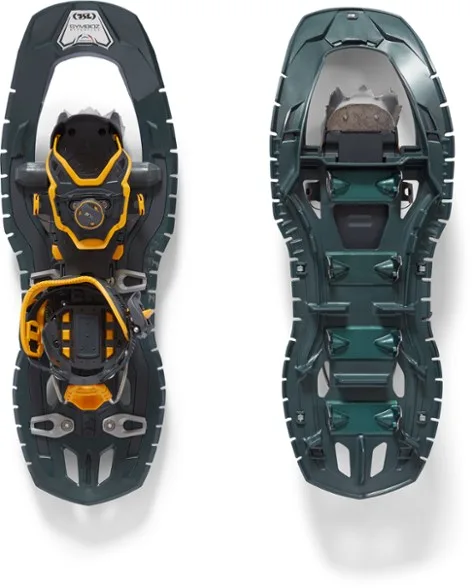
TSL Symbioz Hyperflex Phoenix:
- Super easy to adjust
- Fits a variety of foot sizes (order the size that’s best suited for your weight and shoe size)
- Four adjustment points: one in the middle of the footbed to adjust for shoe length, on your toes, around your ankle, and a lateral adjustment to fit wide and narrow boots
- Heel lifts
- Narrow hourglass shape
- Weighs between 3 lbs 15.5 oz – 4 lbs 10 oz per pair depending on the size
- 8 interchangeable stainless steel crampons
- Frame is made of partially recycled materials
- Flexible frame for stability on uneven terrain
- Replaceable parts
- REI Co-op exclusive
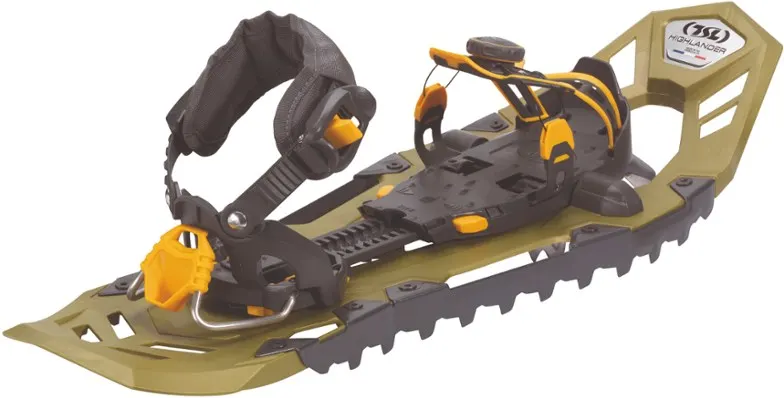
TSL Highlander Adjust
- Super easy to adjust
- Fits a variety of foot sizes (order the size that’s best suited for your weight and shoe size)
- Four adjustment points: one in the middle of the footbed to adjust for shoe length, on your toes, around your ankle, and a lateral adjustment to fit wide and narrow boots
- Heel lifts
- Narrow hourglass shape
- Weighs between 3 lbs 14.8 oz – 4 lbs 5.1 oz per pair depending on the size
- Stainless steel crampons at the toes
- Aggressive steel teeth around edges of the frame
- Replaceable parts
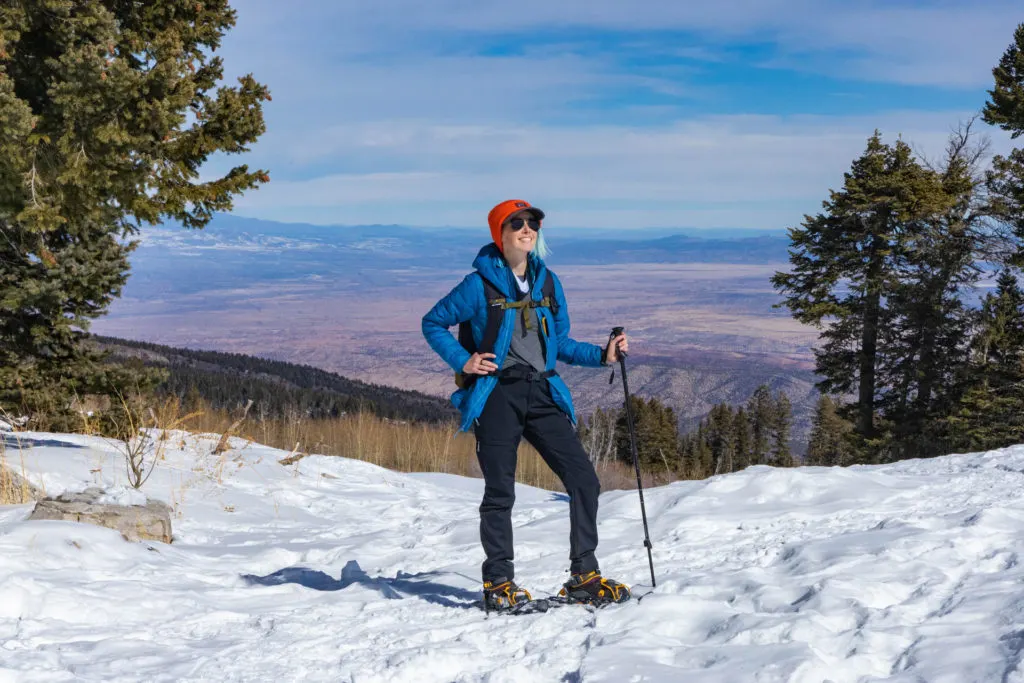
TSL Snowshoes: The Review
So those are the deets, but here’s the breakdown. For starters, I needed a size small and Josh a medium. There are size guides available when you order to ensure you’re getting a pair that fits properly. That said, thanks to the four adjustment points and the Boa fit system, the snowshoes will fit just about any shape and size of shoe or boot. And we used very differently sized and shaped boots.
They’re incredibly easy to adjust. Check the video for instructions, but since there are four adjustment points, you can really dial in the perfect fit no matter what your boots look like or if you’re lending them to a similarly-sized friend.
Most of the points are pre-adjustable, meaning you can set them and forget them, but the two that aren’t are easy: lock in your toes with the Boa fit system (push the dial down and turn clockwise to tighten, then pull the dial up to unlock it and loosen) and tighten the ankle strap with the ratchet system.
When it comes to actual walking in these TSL snowshoes, the narrow hourglass shape offers the ability to walk with a more natural stride. I’ve used other, wider snowshoes and sometimes you kinda feel like you’re walking around like Godzilla. But the narrow profile also meant they weren’t quite as good at keeping you on top of fine, powdery snow as larger, more cumbersome footwear. We definitely sunk a bit in the softer stuff. So, trade-offs, I guess. They still made hiking in snow waaaay easier than post-holing and performed quite well on wetter or packed snow.
The traction on both pairs was solid. They felt really secure on snow whether we were going up, down, sideways or otherways, thanks to all the aggressive teeth and crampons. And those heel lifts are easy to flip down with trekking poles and make uphill hikes much more comfortable.
I especially liked the flexibility of the Hyperflex model. It made walking on really uneven surfaces feel more secure since they gave and flexed, plus dig that they’re made of recycled materials. But it’s a definite bonus that you can replace parts on both snowshoes. Instead of trashing them, just replace a crampon or strap. That’s sustainable.
Which is what TSL wants. They consider the impact of every stage in each product’s life cycle and the impact it will have on the environment. Additionally, all TSL sites are run on 100% renewable electricity, TSL pays particular attention to ensuring that its product packaging has a useful function and is not simply thrown away (the shoes come in reusable storage bags, not plastic or cardboard), and they stock a full range of interchangeable parts to provide a repair service throughout products’ lives.
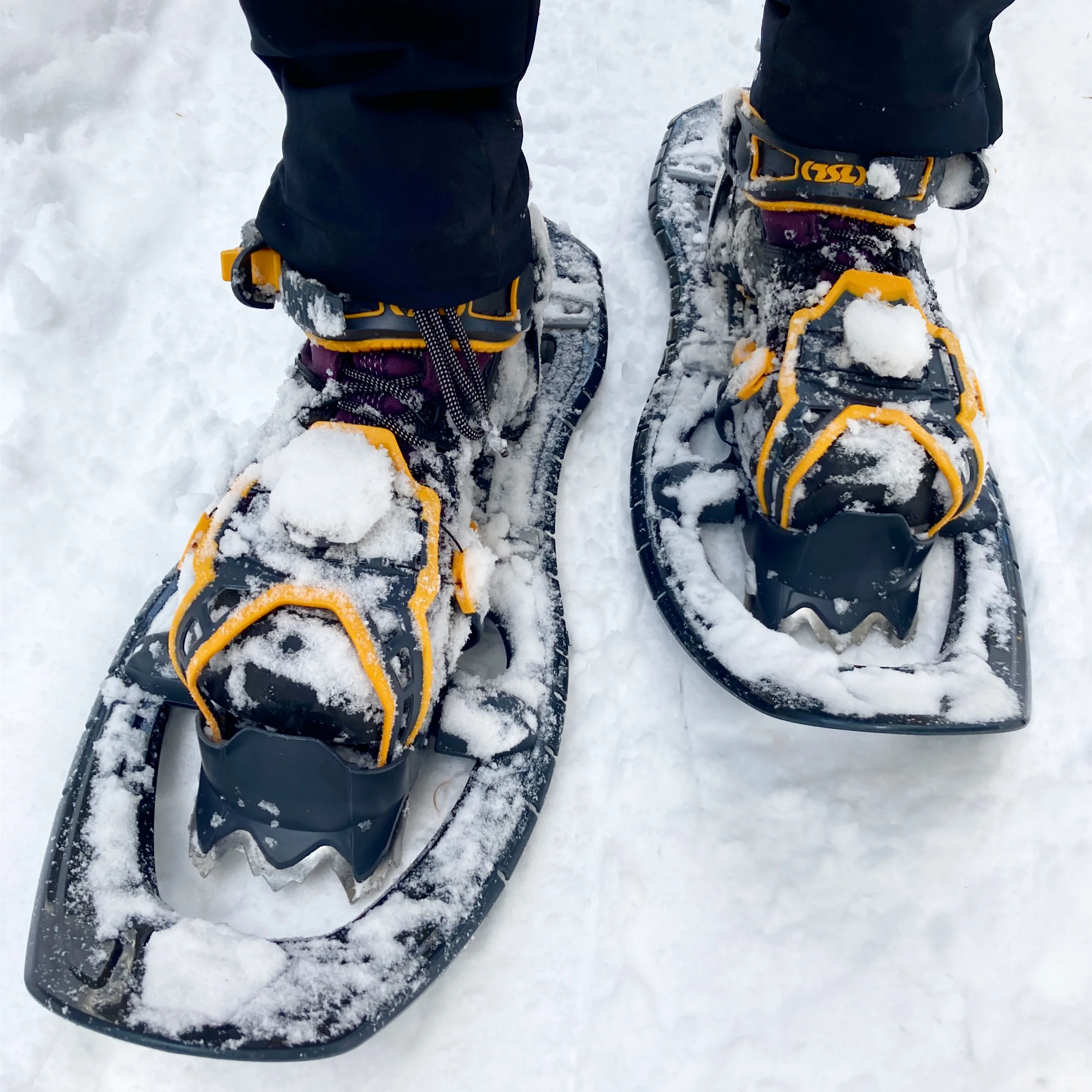
Bottom Line
So who are these TSL snowshoes for? Mostly frequent recreational users. I’m talking folks who love to get out there and hike in the snow on a regular basis. After all, they’re not the cheapest snowshoes on the market at between $250 to $290.
But backpackers and mountaineers will likely prefer something that’s both more ruggedly durable–like something made out of aluminum–and lighter weight.
That said, these are solid snowshoes that will absolutely do the trick for serious winter hiking. We had a blast with them when hiking in Colorado and New Mexico this season. They’re durable, have replaceable parts, fit a wide variety of shoe shapes and sizes, and are just plain fun to use.
Now, if you decide you need a pair ASAP, the Symbioz Hyperflex Phoenix is exclusively available to REI Co-op members (find them here). So there’s one more reason to get a lifetime REI membership, which you can sign up for here. It’s totally worth it, trust us.
The Highlander Adjust snowshoes, on the other hand, can be found at REI and Backcountry.com.
So get out there, enjoy the fourth season, and wander on.
•
Looking for more winter gear content? Check out a review of our fave microspikes, ultimate guide to layering for winter activities, and the best barefoot hiking boots for winter!!
•
This post contains affiliate links. That means when you clicky-click and make a purchase, we may receive a small percentage. But don’t worry; you won’t pay a dime more. Thanks for supporting Terradrift!
Alisha is a freelance outdoor journalist and photographer based in Ogden, UT. She loves backpacking, hiking, mountain biking, kayaking and snowboarding (even though she’s terrible at it). She’s also pretty sure she’s addicted to coffee. alishamcdarris.com

Martin
Wednesday 24th of January 2024
The Highlander model in large has a higher weight rating than any of the main brands out there at 300 pounds. I own a pair of TSL Highlander and have found them to be more robust than Tubbs, Atlas, and other brands I have owned and broken after less than a season of use each time. I weigh 260 pounds dry, which by the time I get dressed and carry a day hike backpack with what I need for longer day hikes brings me closer to the 300 pound mark. Most snowshoes are still for a casual flat terrain trail but I live by fairly steep incline trails and get out a couple times a week on moderately challenging conditions. I do not have a full season on the Highlander snowshoes but they appear to be taking the abuse better than any of my previous snowshoes. I am only sharing my experience as I read the review before buying them and while it was very helpful, I would like to suggest they are far more sturdy in real life conditions than was suggested in the review. As a heavy person who tends to push gear to its limits and experience a lot more failure than those I hike with, because of the strain my weight puts on the gear, I can only suggest that the Highlander model has a construction that appears to make it far more durable and robust than any of the other brands I have tried or seen, including MSR. The hinge on the bindings has been the first part to break on the last three pairs of snowshoes I have owned. Most high end snowshoes have a very similar metal bracket design that serves as the hinge under the ball of the foot, the TSL design is secured above the deck instead of below and it feels to me like this design does a much better job at absorbing the repetitive pressure and impact of the steps required to climb and descend steep slopes on snowshoes. Thank you for the review!
Alisha McDarris
Tuesday 30th of January 2024
Thanks for sharing your experience! As pretty dang small people ourselves, it's so good to be able to hear and share the perspectives of a wider range of users. We dig these snowshoes, too, so we're glad to hear they're standing up to extended testing!